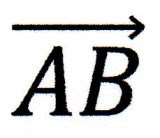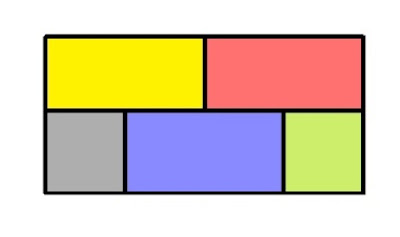VECTOR ALGEBRA
Oxford dictionary definition: A quantity having direction as well as magnitude, especially as determining the position of one point in space relative to another.
Cambridge dictionary definition: Something physical such as force that has size and direction.
The word vector has been derived from a Latin word vectus, which means "to carry".
Types of vectors
 Let P be a point in space having coordinates ( x, y, z ) with respect to originO( 0, 0, 0 ). Then the vector OP having O and P as its initial and terminal points respectively, is called the position vector of the point P with respect to O. Using distance formula, the magnitude of OP is given by
Let P be a point in space having coordinates ( x, y, z ) with respect to originO( 0, 0, 0 ). Then the vector OP having O and P as its initial and terminal points respectively, is called the position vector of the point P with respect to O. Using distance formula, the magnitude of OP is given by
Cambridge dictionary definition: Something physical such as force that has size and direction.
- A vector is a quantity having both magnitude and direction, such as displacement, velocity, force, acceleration etc.
What is magnitude ?
Magnitude: Magnitude means the size of a mathematical object, e.g. when you say a force of 5N is applied in the west direction, it means the magnitude of force is 5 and the direction of force is west.
- A directed line segment is a vector denoted by arrow over AB ( see figure ) and read as 'vector AB'
- The arrow indicates the direction of vector.
- The point A from where the vector AB starts is called its initial point and the point B where it ends is called its terminal point.
- The distance between initial and terminal points of a vector is called the magnitude ( or length ) of a vector denoted as shown in figure below.
The word vector has been derived from a Latin word vectus, which means "to carry".
Types of vectors
- Zero vector: A vector having its initial and terminal points same, i.e., they coincide, is called a zero vector.
Zero vector has zero magnitude.
Zero vector does not have any definite direction. - Unit vector: Vector having magnitude unity i.e., 1, is called unit vector.
- Equal vector: Two vectors are said to be equal, if they the same magnitude as well as same direction.
- Negative vector: A vector whose magnitude is same as that of a given vector but direction is opposite to the given vector, is called negative of the given vector.
- Coinitial vector: Two or more vectors with same initial point are called coinitial vectors.
- Collinear vectors: Two or more vectors are said to be collinear if they are parallel to the same line, irrespective of magnitude and directions.
Position vector
 Let P be a point in space having coordinates ( x, y, z ) with respect to originO( 0, 0, 0 ). Then the vector OP having O and P as its initial and terminal points respectively, is called the position vector of the point P with respect to O. Using distance formula, the magnitude of OP is given by
Let P be a point in space having coordinates ( x, y, z ) with respect to originO( 0, 0, 0 ). Then the vector OP having O and P as its initial and terminal points respectively, is called the position vector of the point P with respect to O. Using distance formula, the magnitude of OP is given by






Comments
Post a Comment